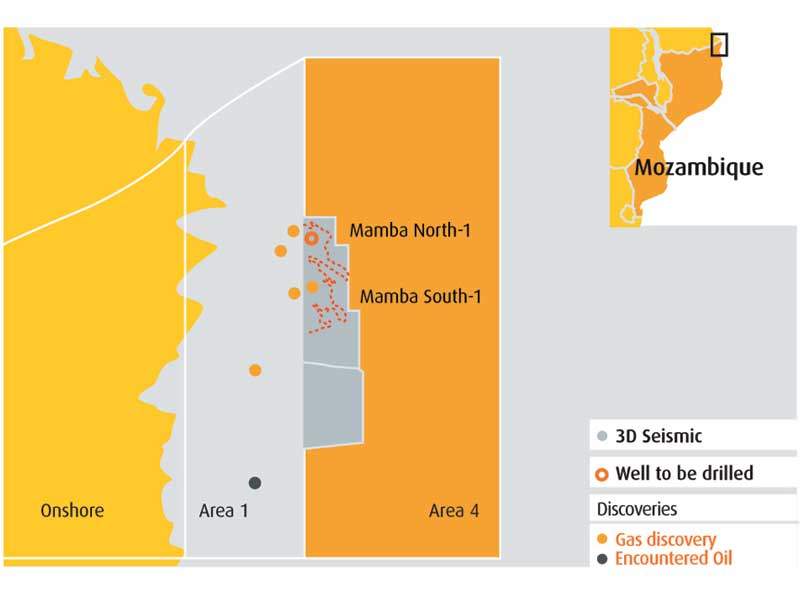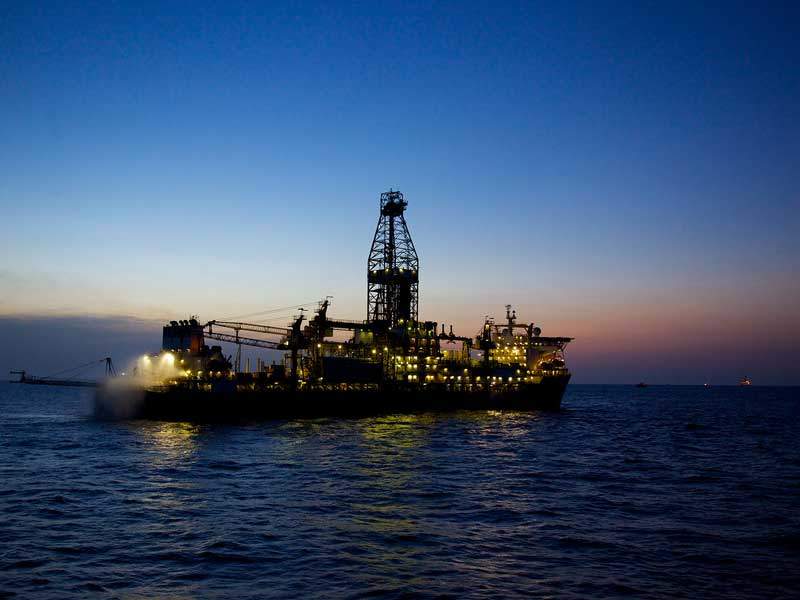The Coral natural gas field located in Area 4, offshore Mozambique, is being developed by Eni as the operator. Eni is also the block operator and holds a 70% stake in the Area 4 through its subsidiary Eni East Africa (EEA), while the other partners, namely Galp Energia, KOGAS, Empresa Nacional de Hidrocarbonetos (ENH), hold a 10% stake each.
Eni holds a 71.4% interest in EEA, while CNPC holds the remaining 28.6%.
The plan for development of the Coral discovery was approved by the Government of Mozambique’s Council of Ministers on 24 February 2016 and forms the first phase of development. It is also the first project in the Rovuma basin to receive an environmental license.
The first phase of development of Coral discovery includes the development of five trillion cubic feet (tcf) of gas and is estimated to cost $8bn. Production from the field is expected to commence in 2020. The total reserves in Area 4 are estimated to be 140 billion cubic metres (bcm) of gas.
Eni announced the start of the Coral field development in June 2017.
Coral field location and discovery
The Coral discovery is located in the deep waters of Rovuma basin spanning Mozambique’s northern border with Tanzania. It lies in water depths ranging between 1,500m and 2,300m, approximately 55km offshore in the western part of Area 4. Situated 150 miles (241.4km) north-east of Pemba, the field is approximately 30 miles (48.2km) from the coast of Mozambique, in the northern province of Cabo Delgado.
The field was discovered in May 2012 and is a high-quality field of Eocenic age containing 16tcf of gas. Exclusive rights to explore the Area 4 of the Rovuma basin containing the field were granted to EEA in December 2006.
Development of the Coral gas field
The Coral field development involves the drilling of six subsea wells and the construction and installation of a floating LNG facility, which will have a capacity of approximately 3.4MTPA.
The floating LNG will be used to develop the entire resources of the Area 4 and bring 140bcm of gas into production. It will comprise a turret-moored, double-hull, floating vessel equipped for receiving, processing and liquefaction of the produced gas. Offloading facilities will also be included, along with storage facilities for LNG and condensate.
A 45km-long subsea pipeline corridor will transfer the produced natural gas from the reservoirs to the onshore LNG facility. The pipeline will make a landfall on the north-eastern coastline of the Afungi Peninsula and will cross the islands of Rongui and Tecomaji.
An LNG facility, storage tanks, temporary and permanent worker housing, construction and maintenance areas and supplemental construction laydown areas will be constructed onshore as part of the project.
Other onshore infrastructure will include an airstrip, power generation facilities (gas turbines), waste disposal facilities, water and wastewater treatment facilities, as well as buffer zones.
Eni and Anadarko Petroleum Corporation have agreed to jointly develop and construct the common onshore LNG liquefaction facilities in the Cabo Delgado Province of northern Mozambique. Anadarko Petroleum Corporation is the operator of Area 1 in the Rovuma basin.
Key players involved
The KD Consortium, comprising KBR and Daewoo Shipbuilding & Marine Engineering Company, has been selected to perform front end engineering design (FEED) for the floating LNG facility.
The consortium will provide the FEED for the topsides, hull and subsea for the floating LNG facility in the Rovuma basin. KBR’s office in Leatherhead will design the topsides and turret, while DSME’s Seoul facility will be used for designing the hull and marine systems.
Saipem provided its drillship for conducting the exploration and drilling operation at the Coral field.










